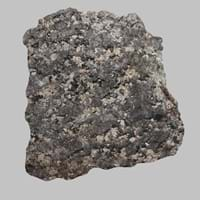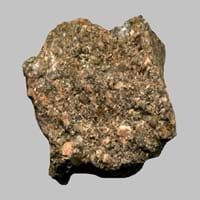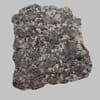Definition
Nephelinite is a fine-grained or aphanitic igneous rock made up almost entirely of nepheline and clinopyroxene (variety augite).
Arkose is a sedimentary rock, specifically a type of sandstone containing at least 25% feldspar
Discoverer
Unknown
Alexandre Brongniart
Etymology
from French néphéline, from Greek nephelē
From Auvergne region of France used by a French geologist Alexandre Brongniart in 1826 who applied this term to some feldspathic sandstones
Class
Igneous Rocks
Sedimentary Rocks
Sub-Class
Durable Rock, Hard Rock
Durable Rock, Hard Rock
Group
Plutonic
Not Applicable
Other Categories
Fine Grained Rock, Opaque Rock
Coarse Grained Rock, Opaque Rock
Texture
Aphanitic
Clastic
Color
Black, Brown, Colourless, Green, Grey, White
Reddish Brown
Durability
Durable
Durable
Scratch Resistant
Yes
Yes
Appearance
Skeletal
Rough and Dull
Interior Uses
Decorative Aggregates, Homes, Interior Decoration
Decorative Aggregates, Homes, Interior Decoration
Exterior Uses
As Building Stone, As Facing Stone, Garden Decoration, Office Buildings, Paving Stone
Paving Stone, Office Buildings
Other Architectural Uses
Curbing
Whetstones
Construction Industry
As Dimension Stone, Cement Manufacture, Construction Aggregate, for Road Aggregate
Cement Manufacture, Construction Aggregate, for Road Aggregate, Production of Glass and Ceramics, Raw material for the manufacture of mortar
Medical Industry
Not Yet Used
Not Yet Used
Antiquity Uses
Artifacts, Monuments, Sculpture, Small Figurines
Artifacts, Sculpture, Small Figurines
Commercial Uses
Creating Artwork, Soil Conditioner, Source of Magnesia (MgO)
In aquifers, Soil Conditioner, Source of Magnesia (MgO), Tombstones
Types
Peralkaline Nephelinite
Not Available
Features
Host Rock for Lead
Available in Lots of Colors and Patterns, Generally rough to touch, Is one of the oldest rock
Archaeological Significance
Monuments
Used
Not Yet Used
Famous Monuments
Data Not Available
Not Applicable
Famous Sculptures
Data Not Available
Data Not Available
Pictographs
Not Used
Not Used
Petroglyphs
Not Used
Not Used
Formation
Nephelinite is a fine-grained, hard rock which is a type of metasomatite, essentially altered basalt. It forms with or without crystallization, either below the surface as intrusive rocks or on the surface as extrusive rocks.
Arkose rock forms from the weathering of feldspar-rich igneous or metamorphic rock, most commonly granitic rocks, which are primarily composed of quartz and feldspar.
Mineral Content
Clinopyroxene, Nepheline, Plagioclase
Calcite, Clay, Clay Minerals, Feldspar, Micas, Quartz
Compound Content
Ca, CaO, Carbon, Cl, MgO
Aluminium Oxide, CaO, Iron(III) Oxide, Potassium Oxide, MgO, Sodium Oxide, Silicon Dioxide
Types of Metamorphism
Contact Metamorphism
Not Applicable
Types of Weathering
Biological Weathering, Chemical Weathering, Mechanical Weathering
Biological Weathering, Chemical Weathering, Mechanical Weathering
Types of Erosion
Chemical Erosion, Water Erosion, Wind Erosion
Coastal Erosion, Glacier Erosion, Water Erosion, Wind Erosion
Grain Size
Fine Grained
Coarse Grained
Porosity
Less Porous
Highly Porous
Luster
Vitreous to Metallic
Dull
Compressive Strength
Not Available
Cleavage
Imperfect
Not Available
Toughness
2.7
Not Available
Specific Gravity
2.4-2.9
0
Transparency
Opaque
Opaque
Density
2.5-3 g/cm3
Not Available
Specific Heat Capacity
Not Available
Resistance
Heat Resistant
Heat Resistant, Impact Resistant, Pressure Resistant
Deposits in Eastern Continents
Asia
Japan
China, India, Kazakhstan, Mongolia, Russia, Uzbekistan
Africa
Rwanda, Tanzania
Namibia, Nigeria, South Africa
Europe
Not Yet Found
Austria, Denmark, Germany, Great Britain, Netherlands, Norway, Poland, Sweden, Switzerland, United Kingdom
Others
Hawaii Islands
Greenland
Deposits in Western Continents
North America
Canada, USA
Canada, USA
South America
Colombia
Brazil
Deposits in Oceania Continent
Australia
Not Yet Found
New South Wales, New Zealand
Nephelinite vs Arkose Characteristics
Though some rocks look identical, they have certain characteristics which distinguish them from others. Characteristics of rocks include texture, appearance, color, fracture, streak, hardness etc. Nephelinite vs Arkose characteristics assist us to distinguish and recognize rocks. Also you can check about Properties of Nephelinite and Properties of Arkose. Learn more about Nephelinite vs Arkose in the next section. The interior uses of Nephelinite include Decorative aggregates, Homes and Interior decoration whereas the interior uses of Arkose include Decorative aggregates, Homes and Interior decoration. Due to some exceptional properties of Nephelinite and Arkose, they have various applications in construction industry. The uses of Nephelinite in construction industry include As dimension stone, Cement manufacture, Construction aggregate, For road aggregate and that of Arkose include Cement manufacture, Construction aggregate, For road aggregate, Production of glass and ceramics, Raw material for the manufacture of mortar.
More about Nephelinite and Arkose
Here you can know more about Nephelinite and Arkose. The life cycle of a rock consists of formation of rock, composition of rock and transformation of rock. The composition of Nephelinite and Arkose consists of mineral content and compound content. The mineral content of Nephelinite includes Clinopyroxene, Nepheline, Plagioclase and mineral content of Arkose includes Calcite, Clay, Clay Minerals, Feldspar, Micas, Quartz. You can also check out the list of all Igneous Rocks. When we have to compare Nephelinite vs Arkose, the texture, color and appearance plays an important role in determining the type of rock. Nephelinite is available in black, brown, colourless, green, grey, white colors whereas, Arkose is available in reddish brown colors. Appearance of Nephelinite is Skeletal and that of Arkose is Rough and Dull. Properties of rock is another aspect for Nephelinite vs Arkose. The hardness of Nephelinite is 6.5 and that of Arkose is 6-7. The types of Nephelinite are Peralkaline Nephelinite whereas types of Arkose are Not Available. Streak of rock is the color of powder produced when it is dragged across an unweathered surface. The streak of Nephelinite and Arkose is white. The specific heat capacity of Nephelinite is 0.88 kJ/Kg K and that of Arkose is Not Available. Depending on the properties like hardness, toughness, specific heat capacity, porosity etc., rocks are resistant to heat, wear, impact, etc.Nephelinite is heat resistant whereas Arkose is heat resistant, impact resistant, pressure resistant.





